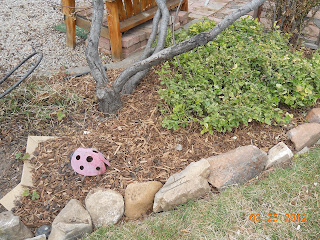Today has been the perfect Spring day- 70 degree weather, sunshine, and a slight cool breeze- so nice!! A good friend of mine put a little bug in my ear and encouraged me to plant asparagus in my garden. So about a week ago I found some bare roots at WalMart, eight plants for around six dollars. And I have been waiting for a warm spring day to get out into the garden and plant asparagus.
The variety I purchased is called Jersey Hybrid, which comes highly recommended. It is supposed to be quite disease resistant and also produce lots of spears come harvest time.
Springtime is the right time to plant asparagus. Now you can plant from seed. However, it will take an additional two years to be able to get any results. If you choose to plant bare roots, you may be able to have a small harvest that next spring, but for sure you will be eating asparagus two years from the time you planted. It is a investment of time, but the rewards will surely be worth it.
First, you need to find a good spot in your garden or yard, somewhere that can go undisturbed for years to come. Asparagus is a perennial which means that it will grow back year after year with proper cultivation. So pick a place that will not be bothered as you till the rest of the garden. This also needs to be a sunny location that is watered well, which means for an hour or more once a week throughtout the growing season.
 |
| Dig a trench, keeping the soil close by to backfill with. |
Once you have determined where to plant the asparagus, dig a trench around twelve inches deep, twelve inches wide. Some sources say eight inches deep, eight inches wide. Others say eighteen inches deep and eighteen inches wide. I chose the middle ground. As you dig, keep the dirt in a pile close by as you will backfill the trenches with it as spears begin to grow. Mix this soil with lots of good humus (like leaves, compost, and peat moss) as well as a good commercial fertilizer (16-16-8). This will make the soil light and fluffy for the spears to poke up through as they grow.
After I made the trenches, I dug a little deeper loosening the soil in the bottom and also mixing in lots of rich compost from my compost bin. Then I formed little four inch mounds of soil about six inches apart and spread the roots out so they look like a spider spreading its legs out over the mound.
 |
| Spread out the roots in the trench so they look like spiders. |
After placing the asparagus roots in the trench, cover them with the composted, fertilized soil until the crowns of each plant are just barely covered. Thoroughly soak the trenches and continue to water them each day for two weeks, keeping the roots damp. The spears will start to grow up through the soil. Wait until they are about three inches up out of the soil and then once again cover them with the soil/compost/fertilizer mixture. Continue burying the spears as they grow until the soil is up to ground level. Then let the spears keep growing into tall ferns this first year. After the spears are established, water them deeply for at least an hour once a week.
 |
Keep the trench watered well each day for two weeks, and then
continue watering deeply once a week. |
It is important to fertilize the asparagus each spring when you stop harvesting the spears to encourage vigorous growth of the ferns. They can grow three to five feet tall throughout the hot summer months, which provides food and energy for the plants enabling them to give you a great harvest the following spring.
In the fall, the ferns will turn yellow and die off completely. Feel free to cut them down to the ground and till them into the soil, along with lots of organic matter like leaves and grass clippings for good nutrients and tilth. While tilling be careful to stay on the top two or three inches of soil so the roots are not disturbed.
The following spring should bring a mild harvest for two weeks, then be sure to let some spears grow into healthy ferns throughout the summer. The next year harvest spears for 4-6 weeks, and the third year and all subsequent years harvest for 8-10 weeks throughout the spring.
To harvest the asparagus spears, let them grow until they are about four or five inches tall. Then cut them off right down to the ground. If the spears get much bigger than this they get tough and stringy.
One last bit of advice is to keep weeds, and especially grass, clear of this area if at all possible. You may want to mulch the filled trenches or cover them with black landscape fabric to keep the weeds at bay.
Asparagus is definitely one of my favoirte vegetables, right up there with fresh garden peas. And I cannot wait to reap the rewards of today's spring project.






.jpg)







